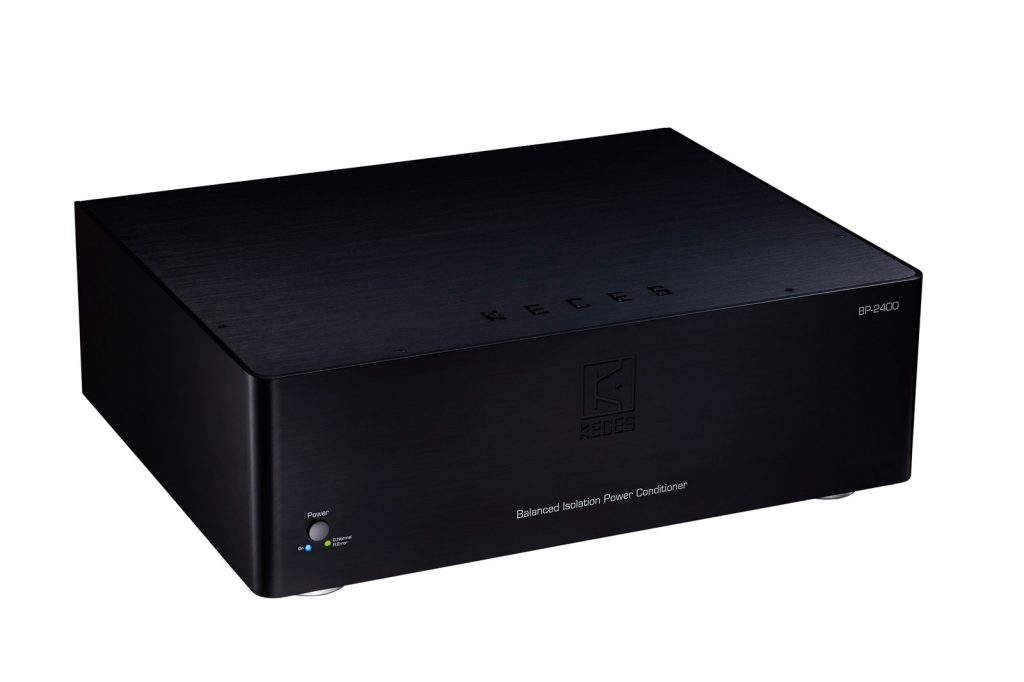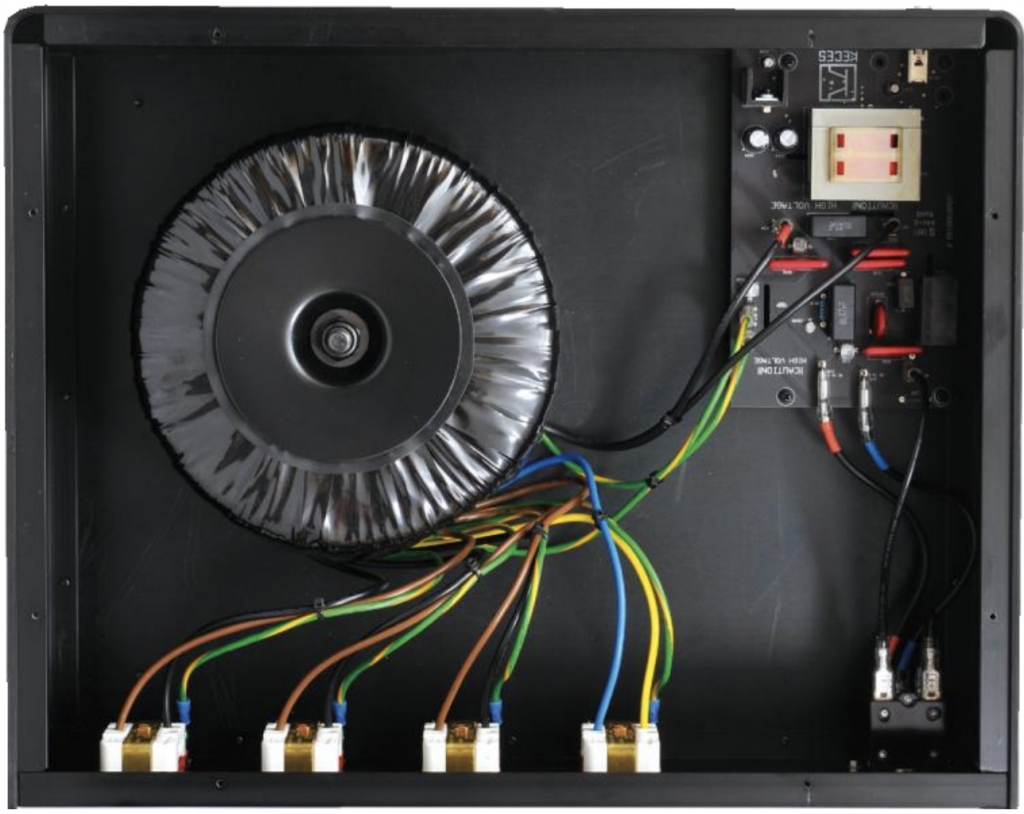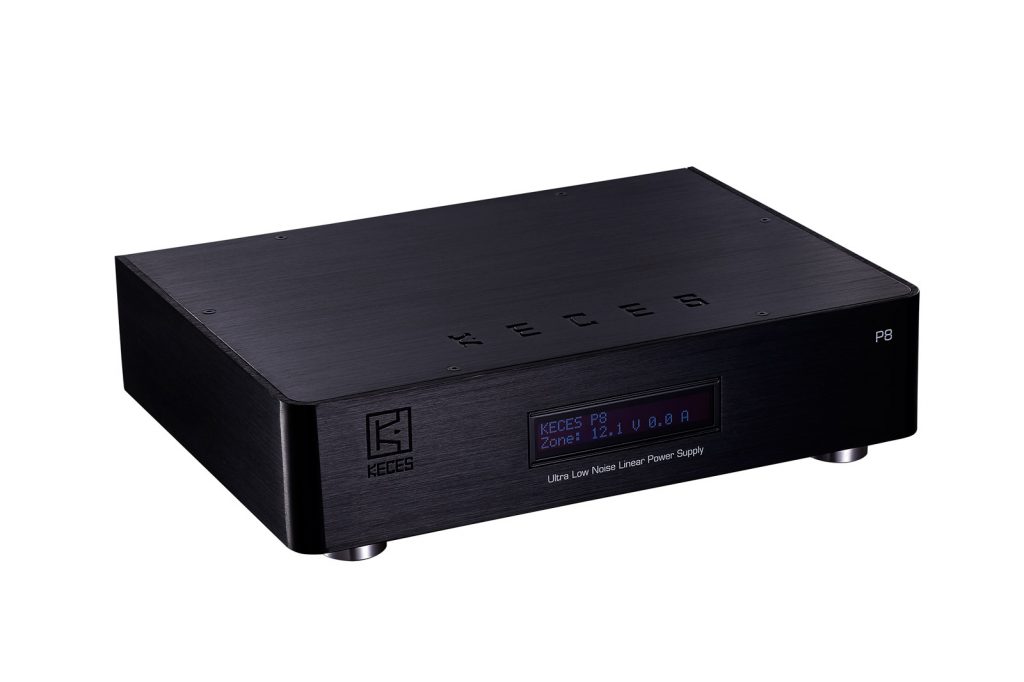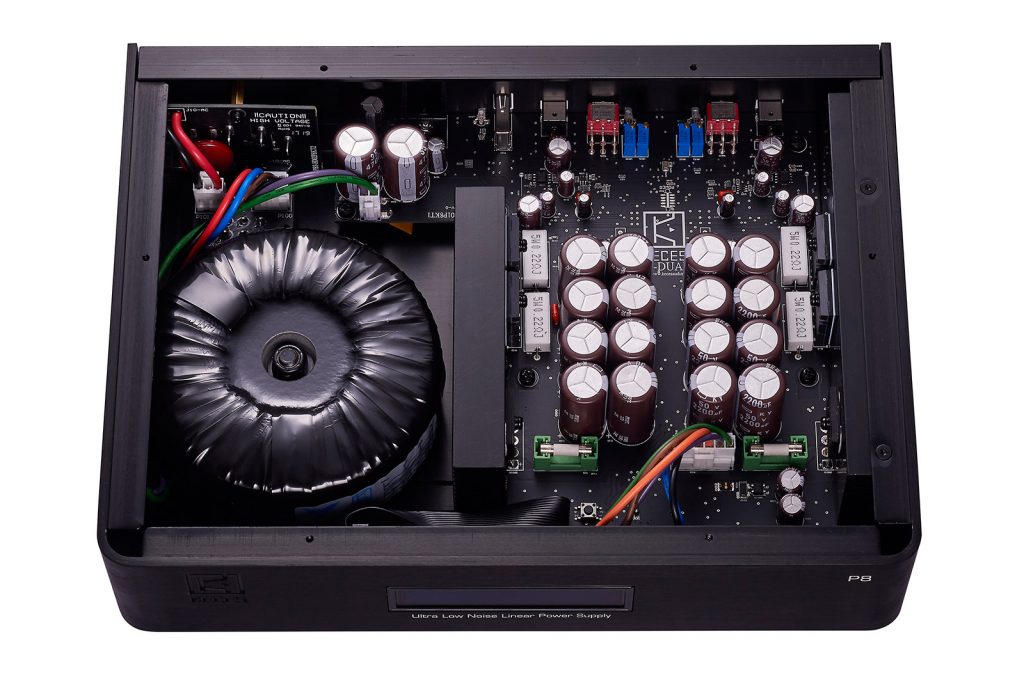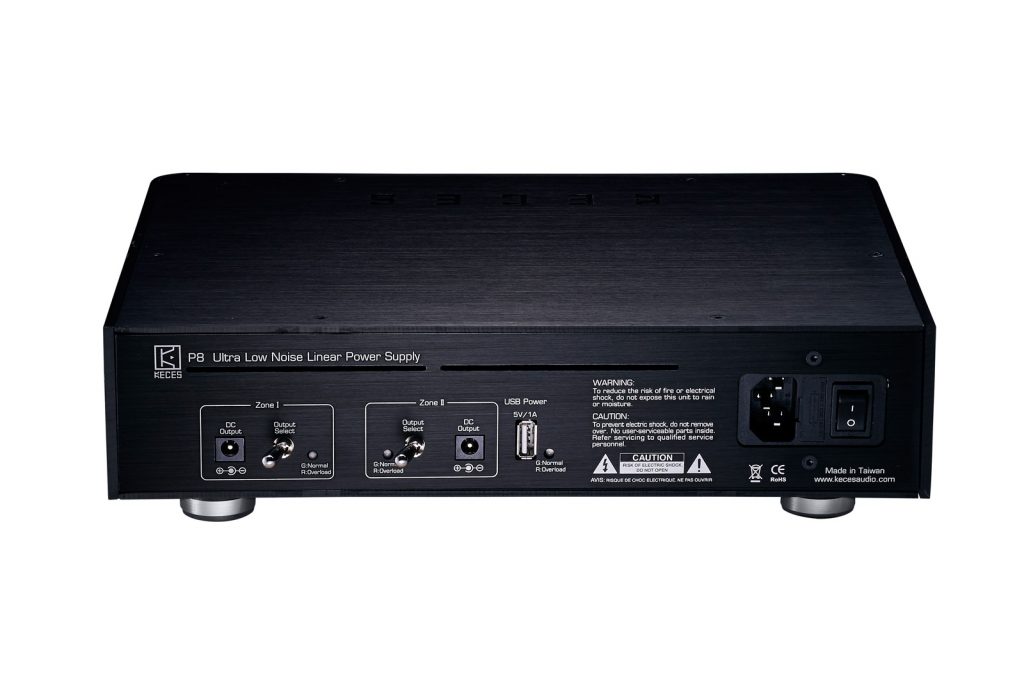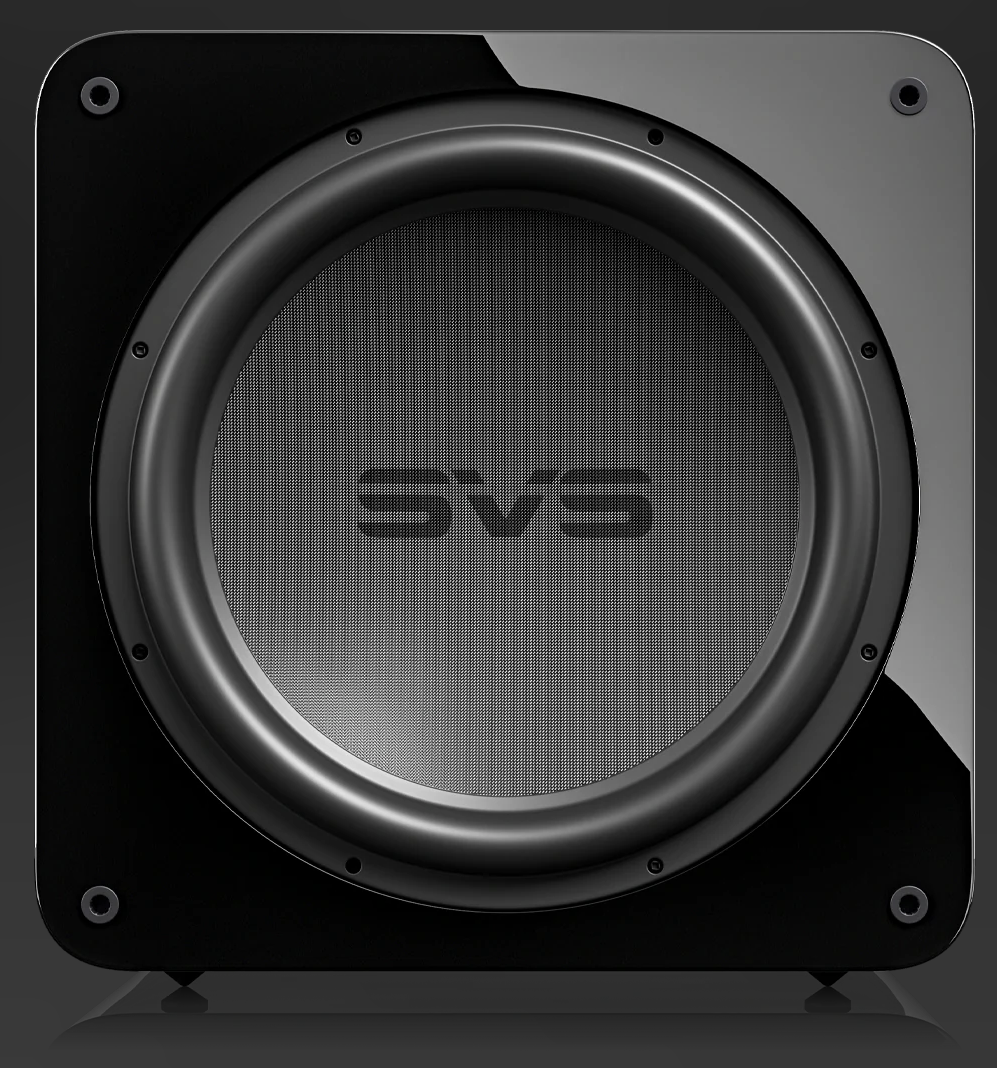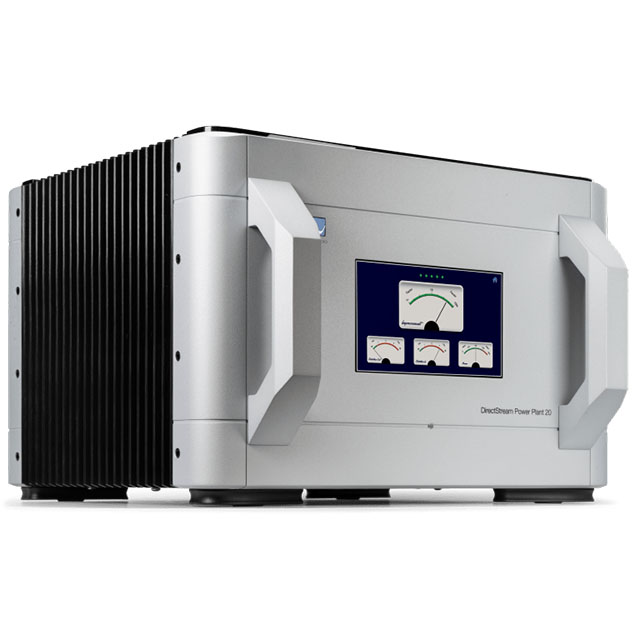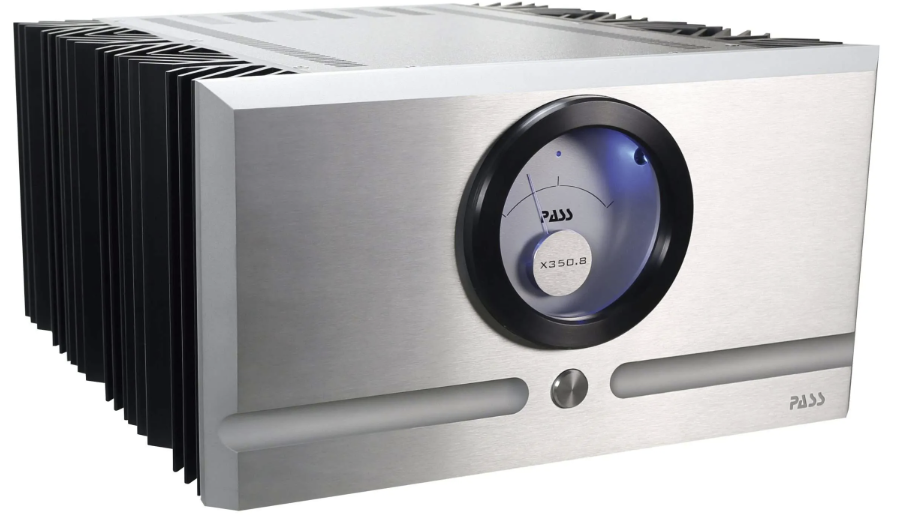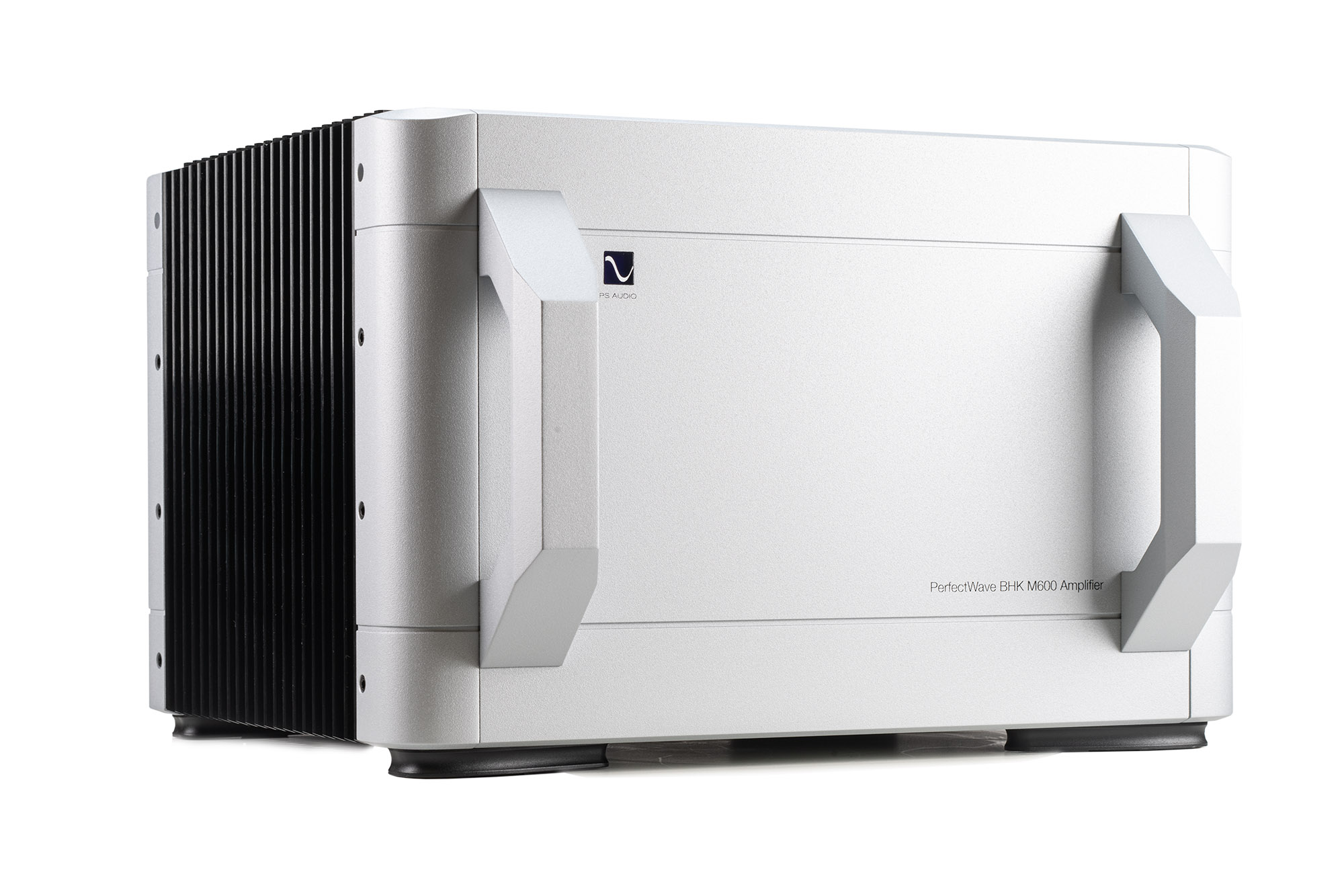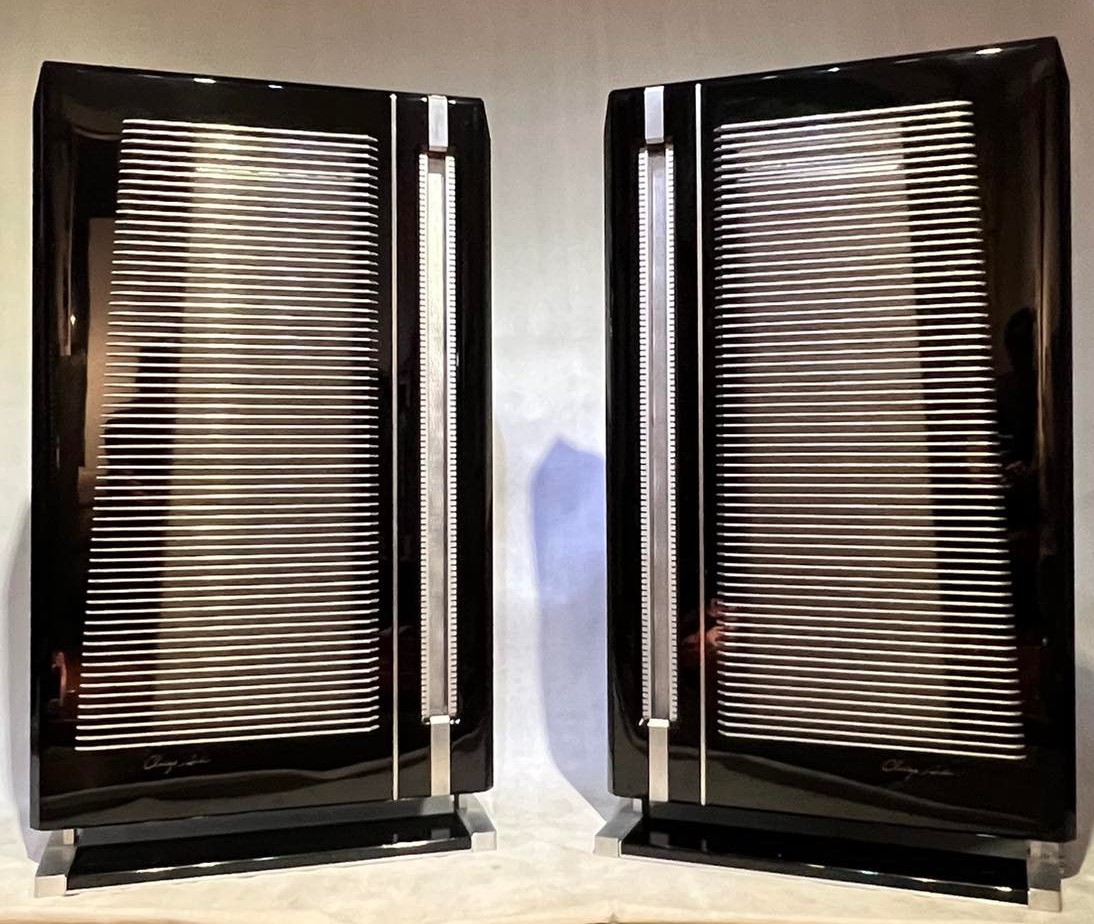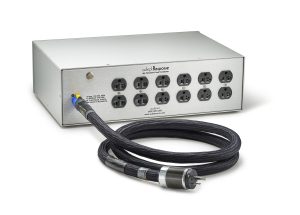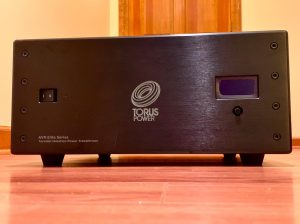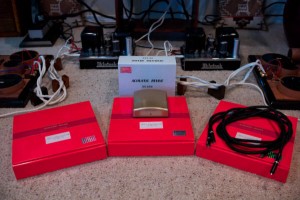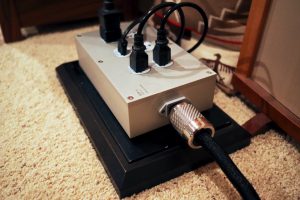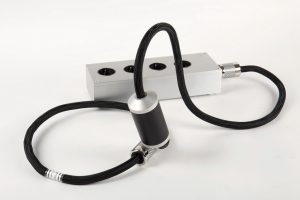Keces Audio (stylized KECES) is a high end audio audio manufacturer based out of Taiwan. They curate several different components, mostly focused around power (both creation and conditioning), so this review will be in two parts. One for the BP-2400 Balanced Isolation Power Conditioner, and the other for the P8 Linear DC Power Supply (Dual Output).
Starting with the BP-2400, we have your standard sized unit measuring in at 430 x 340 x 133mm or approximately 17" x 13" x 5" weighing in at a hefty 25KG (or about 55 lbs). First impressions are always important when removing from the packaging anything related to power. I liked that it felt well-built. Minimal on the fascia—your standard power button and function LEDs to indicate status (more on that later). On the rear you have 8 output receptacles (rated for 20 amp), audiophile / hospital grade and red in color. The power inlet isn't your standard 15A IEC, rather it's true 20A so that if you truly need 20 conditioned amps, you have it as long as your power system can support it of course. I was lucky to have on hand a good quality 20A power cable, but if you don't, no worries, a standard one is included in the box.
I connected it to my home's mains, hit the power button, and heard a faint click of a relay, where the power LED illuminated blue, and the corresponding LED lit green to indicate no power line errors (ground faults, for example). This means the unit actually has a logic board installed. You would be surprised how many of these types of units I've received where they are really just filled with power cables and receptacles (basically just an overpriced power strip).
Since I feel comfortable around main's voltages, I decided at this point to open up the unit to inspect the build quality, and to see what was actually inside. I'm curious by nature, an engineer-hobbyist, and also a skeptic. I will usually do this as long as it's harmless and the unit itself doesn't have any warranty-void stickers on it. You guys deserve to know what is actually going on here...
Within I found a logic board that controls the power up sequence, checks for any line errors, and then enables the system. Conditioning is performed by a large toroidal transformer. Once everything checks out, you should be supplied with a much cleaner power signal from the rear power outlets. But does it?
You have all heard of the phrase, "dirty power," if you haven't, it's basically a phrase that explains a condition in which your power is coming from a more "dirty" source, OR, it's a time of the day where there are people on the "grid" using equipment that can cause noise on your line. Yes, most homes, here in the States anyway, have 220V single phase power delivered to their home and connected to other homes as well. Have you ever noticed that during the day something just doesn't sound right when listening? Go outside and have a listen, or walk around. During a hot summer day, people have pool equipment running, air conditioners, and now cars charging in their garage (yes, I tick all of those boxes.) Even though there are guidelines for manufacturers of this electrical equipment to not pollute the lines, it still happens to a certain degree. That is where a conditioner comes in handy.
This dirty power thing seems to affect people in different ways. For me, it causes listener fatigue. I notice I cannot enjoy a listening session for as long as I normally would at night time. This isn't voodoo magic, if you are electronically inclined you can do your own testing using an oscilloscope. For me, I'll stick to what I know and just trust my ears. To fix this issue, you can opt to use the BP-2400 (or one of its little brothers) and now you can listen all day!
It didn't really matter what I was listening to, be it hard rock, classical, etc.—everything sounded better. Less fatigue, longer sessions, deeper bass, extended holographic, and soundstage. A definite improvement. Everyone suffers from dirty power, you owe it to yourself to get a conditioner of some sort. Keces definitely has one that will suit your needs! Also just the peace of mind having equipment connected to it for longevity reasons. I had 4 Class-D based amps connected, my Audio Desk Systeme Ultrasonic Record cleaner (can't live without this thing—I reviewed it HERE), and the Gold Note Ph-10/PSU-10 combo phono stage (another amazing piece of kit also reviewed HERE).
Secondly, the BP8 Linear Power supply. This is a really useful piece of gear that allows you to break free from using a substandard "wall-wart" or "power-brick," usually included with ancillary gear such as DACs, Music Servers—etc. Rather than use a cheaply made power supply, this allows you to take advantage of a properly built linear power supply to provide a clean regulated output. You would be surprised how a cheaply made switching power supply can wreak havoc on a computer system, either by under- or over-volting it, or just injecting a ton of noise. This is inevitable when a supply is built using cheap components to keep the cost down.
With this unit in particular, I had it configured for dual outputs. One will do 9 or 12 volts respectively, the other 12 or 15. All units also include a handy USB 5V 1A output as well in case you have a Raspberry Pi, or something that uses USB power. I do wish the unit had the ability to change its output voltage in a sliding scale instead, rather than be fixed to two options. You see, you have to know what you want during the ordering process, and from that point it cannot be changed. Of course, the number of components to do this would increase cost and complexity, so I'm guessing it was done for a reason. No worries—at this time I used it to power up a DAC (Mytek Brooklyn) as well as a Raspberry Pi.
This was an interesting experiment, as before I was using the internal power supply of the Mytek, as well as a cheap gas station 120V-5V USB "phone charger" for the Raspberry Pi (being used as a Roon end-point rendering device). Ends up I never knew how much better it could be using an external linear power supply instead! Not only was I having issues with listener fatigue, I was having technical issues with the RBP rebooting and just being reliable. What a difference. Now the RBP is rock-solid and even runs less hot.
The Mytek was another story. While I wasn't having reliability issues, I definitely could hear some digital smearing and harshness, depending on how long I had been listening. I don't think the internal switching supply was built for all-day listening or sound quality. Most likely it's just using cheap components to give the Mytek what it needed to keep the cost down, but also to not have to use an external supply. Well, thankfully it has the option for an external supply—and configuring was a cinch. Simply take the included DC umbilical (included with the BP8), ensure the voltage is selected properly (with a really cool switch on the back that has a safety feature built in, you must pull on it in order to slide) and connect it all up. A great bonus feature on the unit is a front LED display that shows both the voltage output as well as the current draw.
My unit in particular was fitted with dual outputs, so it just cuts the total current in half for each output (4A per vs 8A), which was more than enough for my needs, but if you need more than 4 amps for an output, you will have to opt for the single output version.
Once everything was connected and I was playing back music—all sorts of things came into place. On the sound quality front, a much tighter soundstage, greater focus, dynamics and such.. But even more importantly with the computers involved, reliability and less heat. You know, there is nothing worse than when you are streaming music from a computer or DAC and it gets suddenly interrupted or requires a "get up and reset it" sort of situation. All of those issues went away with the Keces, which was very impressive. You would be surprised how many audio designers (especially when it comes to computer-based audio) cheap out on the power supply section. I think it's one of the most important things. I do wish though that I had a bit more versatility with power output selection so that I could try other devices (I have a few 5V for example that need more than 1A). But for the price and what it does, it is a superb piece of equipment. You really can't go wrong with these two pieces of equipment, I can't seem to fathom living without them!
BP-2400 Balanced Isolation Power Conditioner
Retail: $1699.95
P-8 (as configured)
Retail: $699.95
Keces Audio





